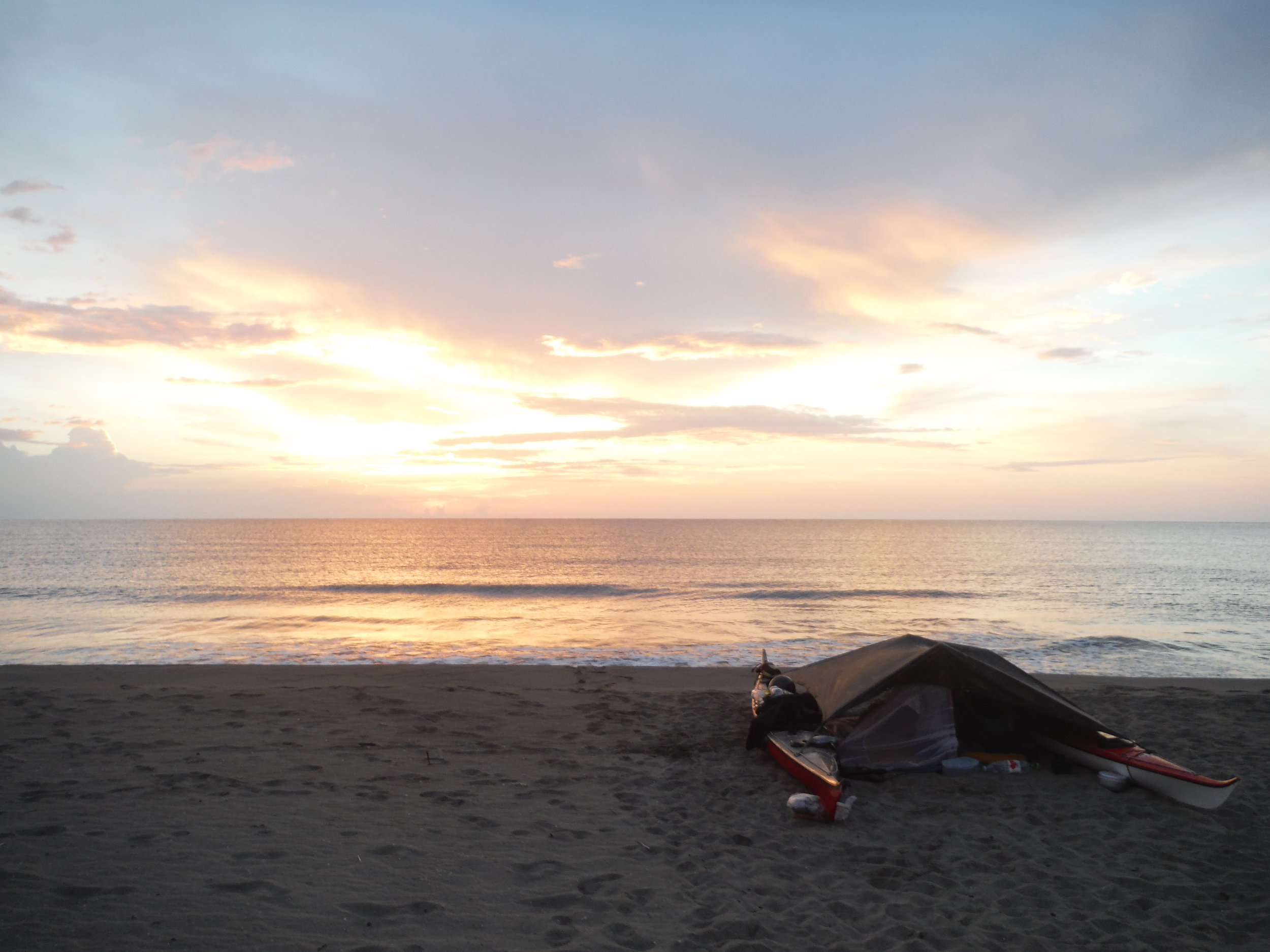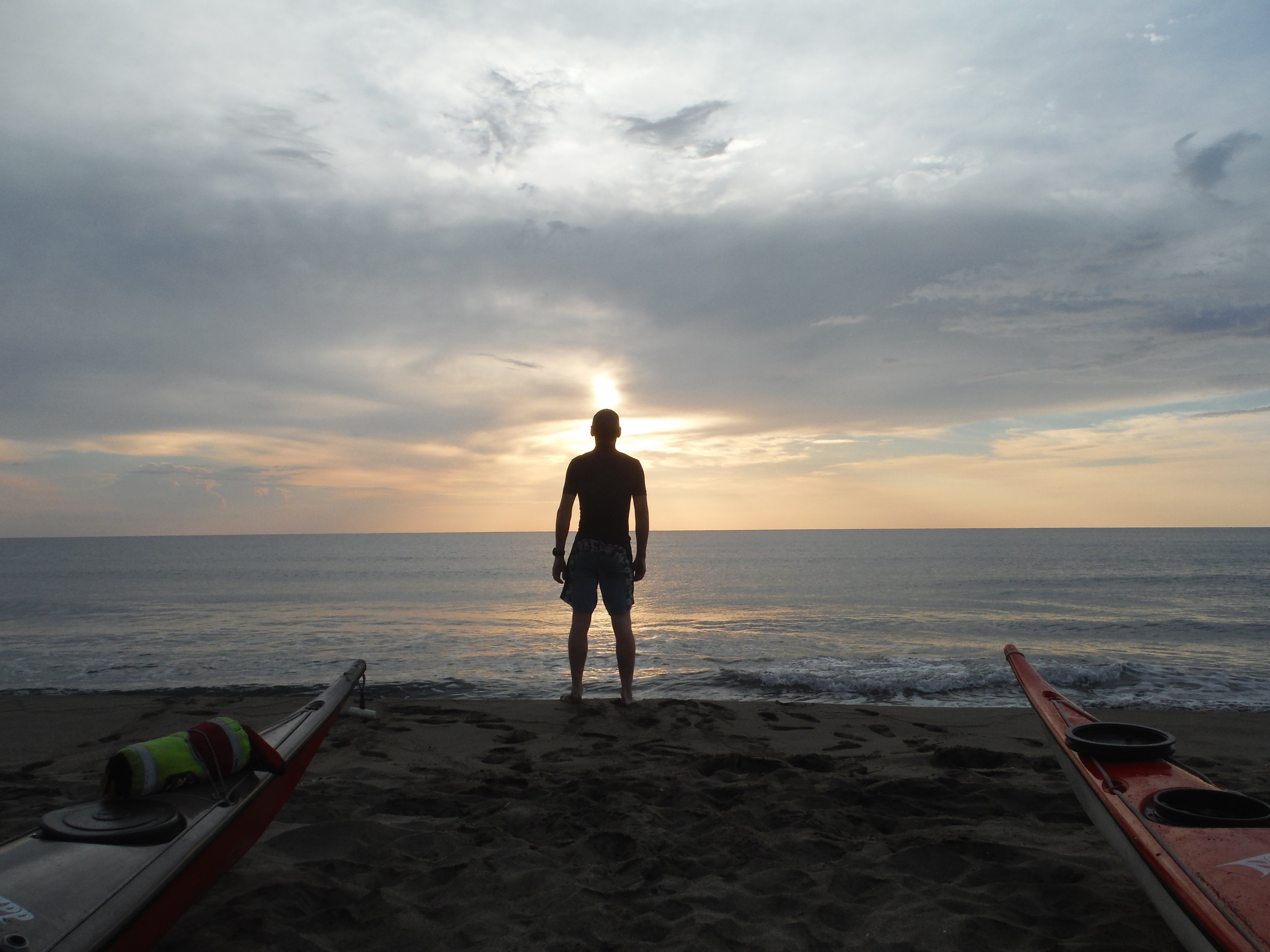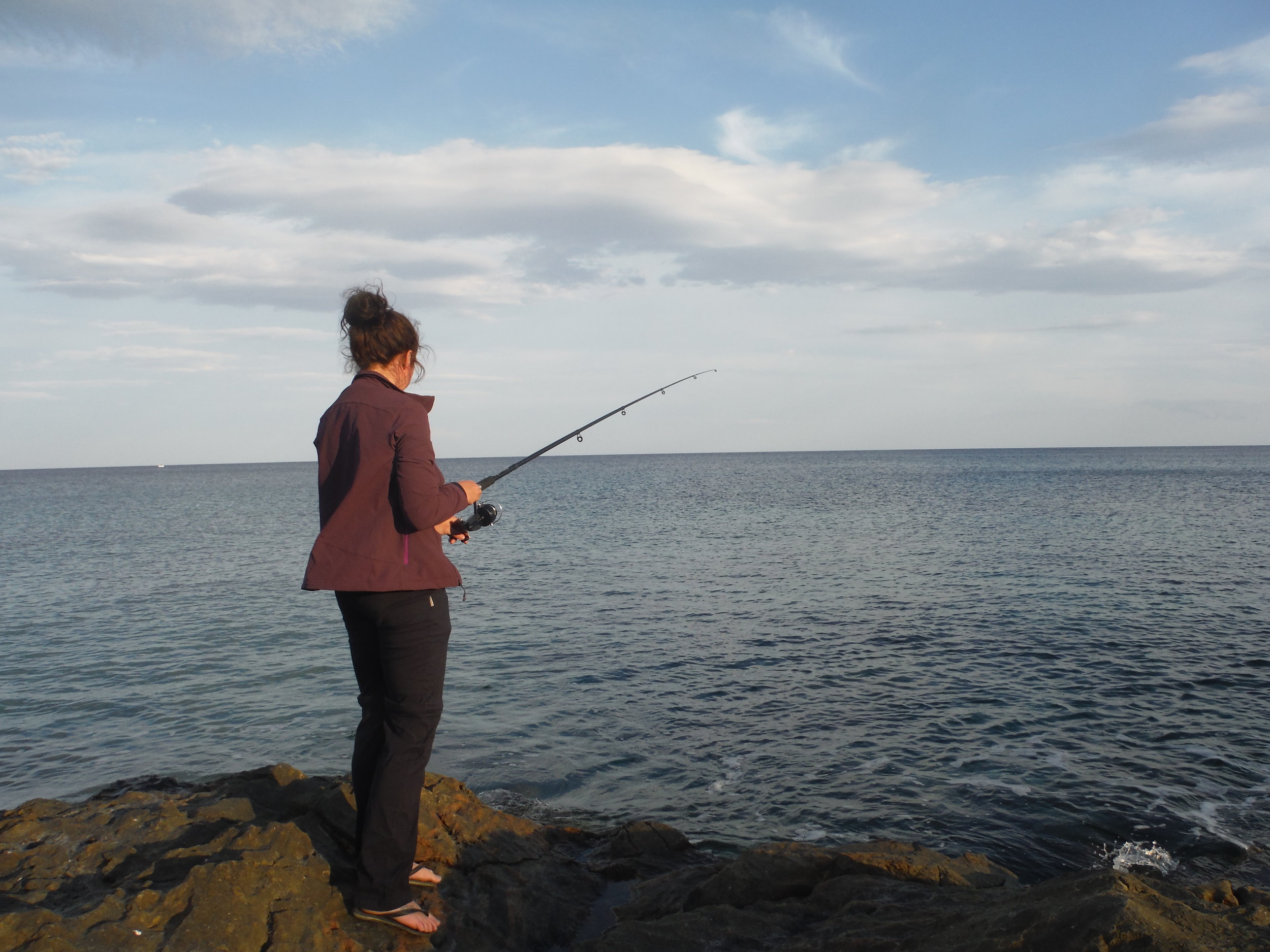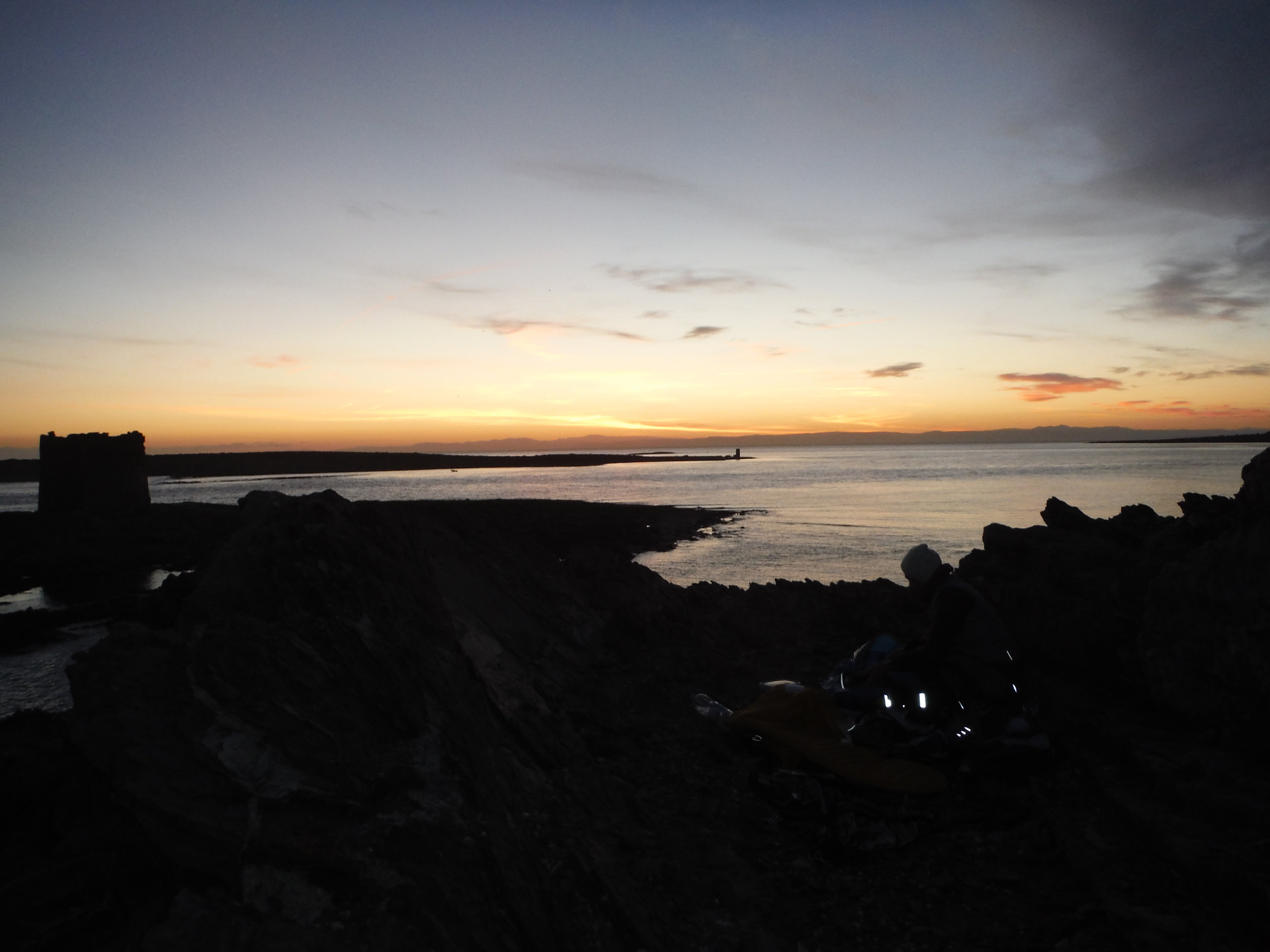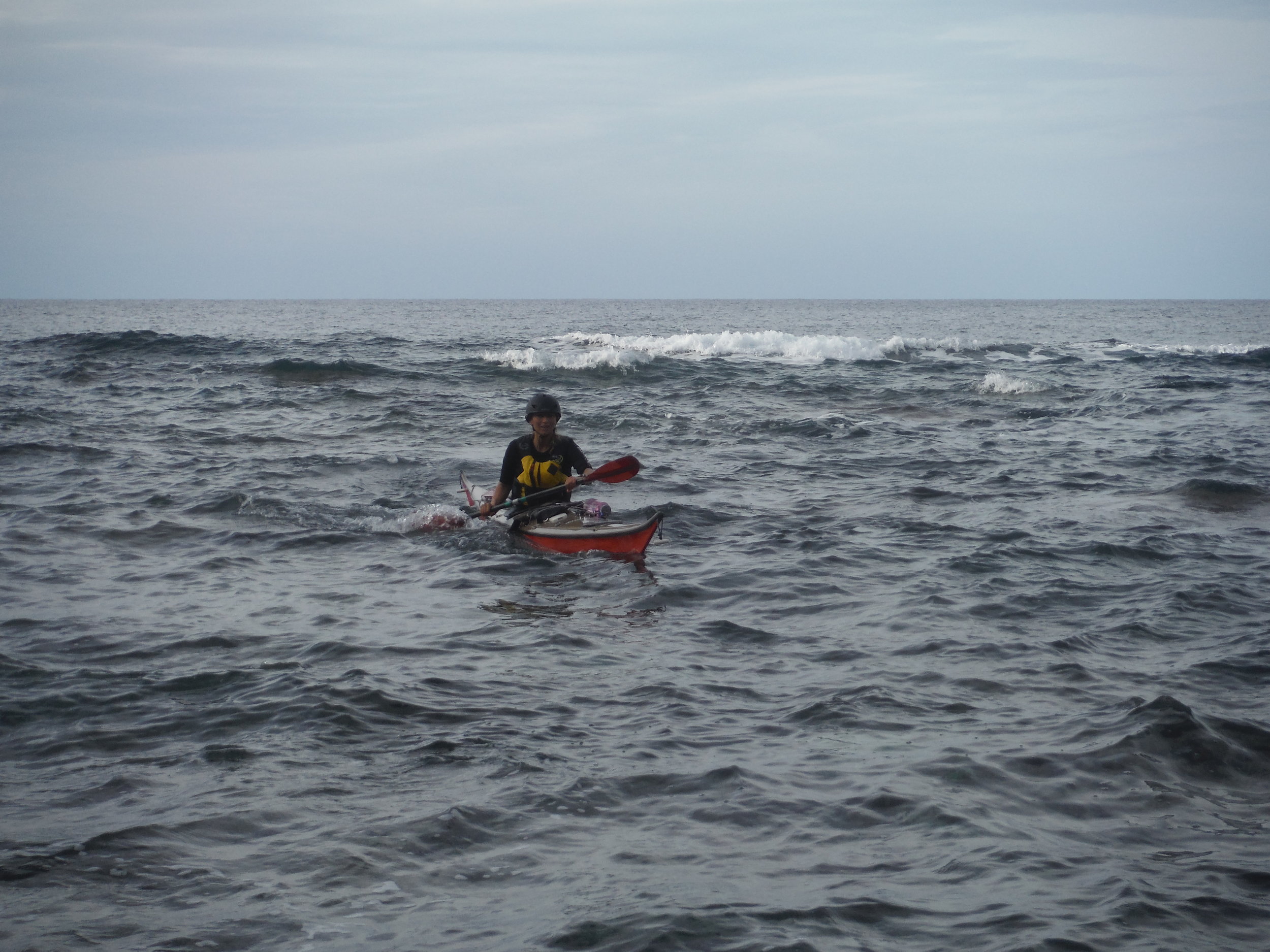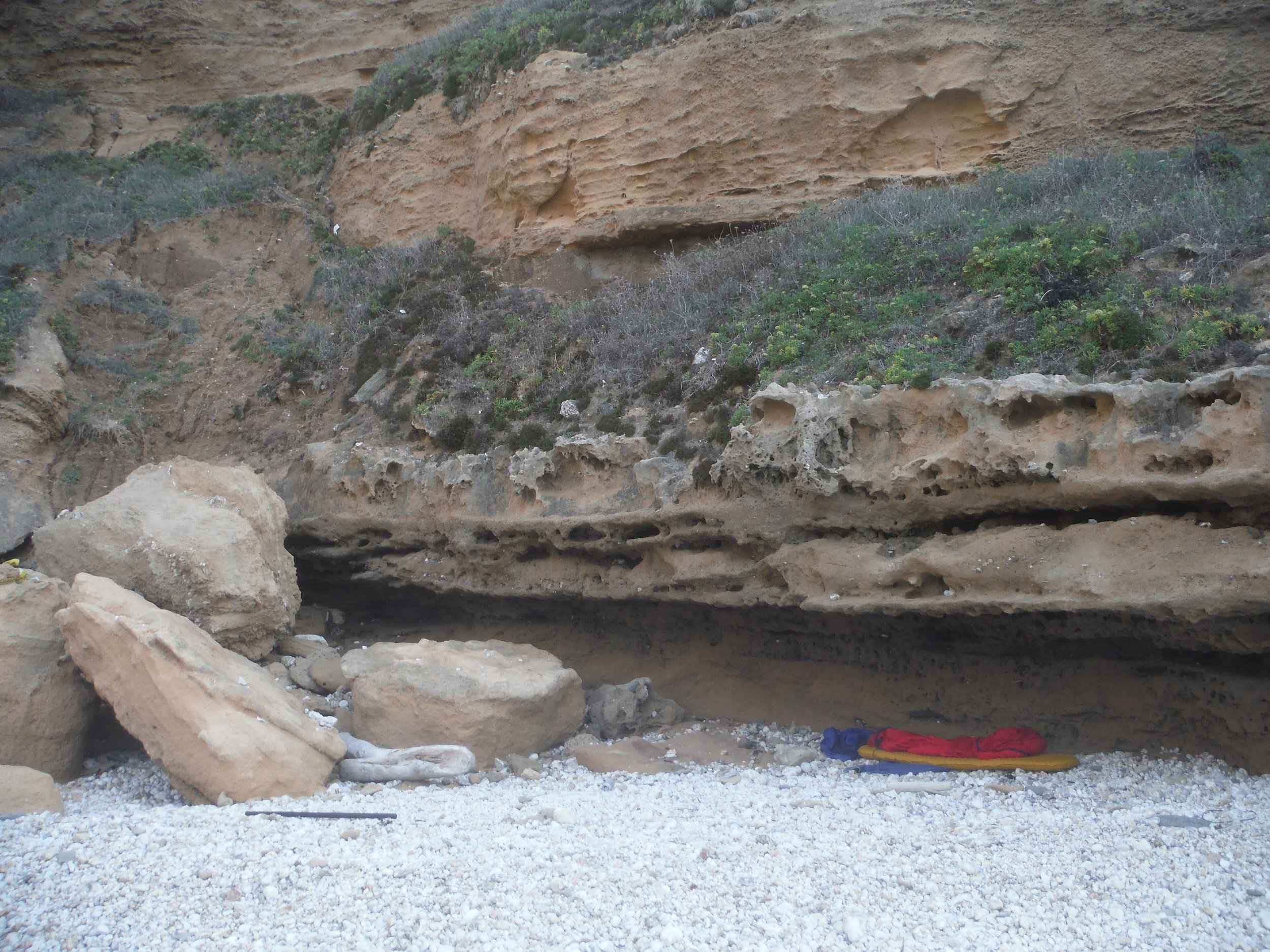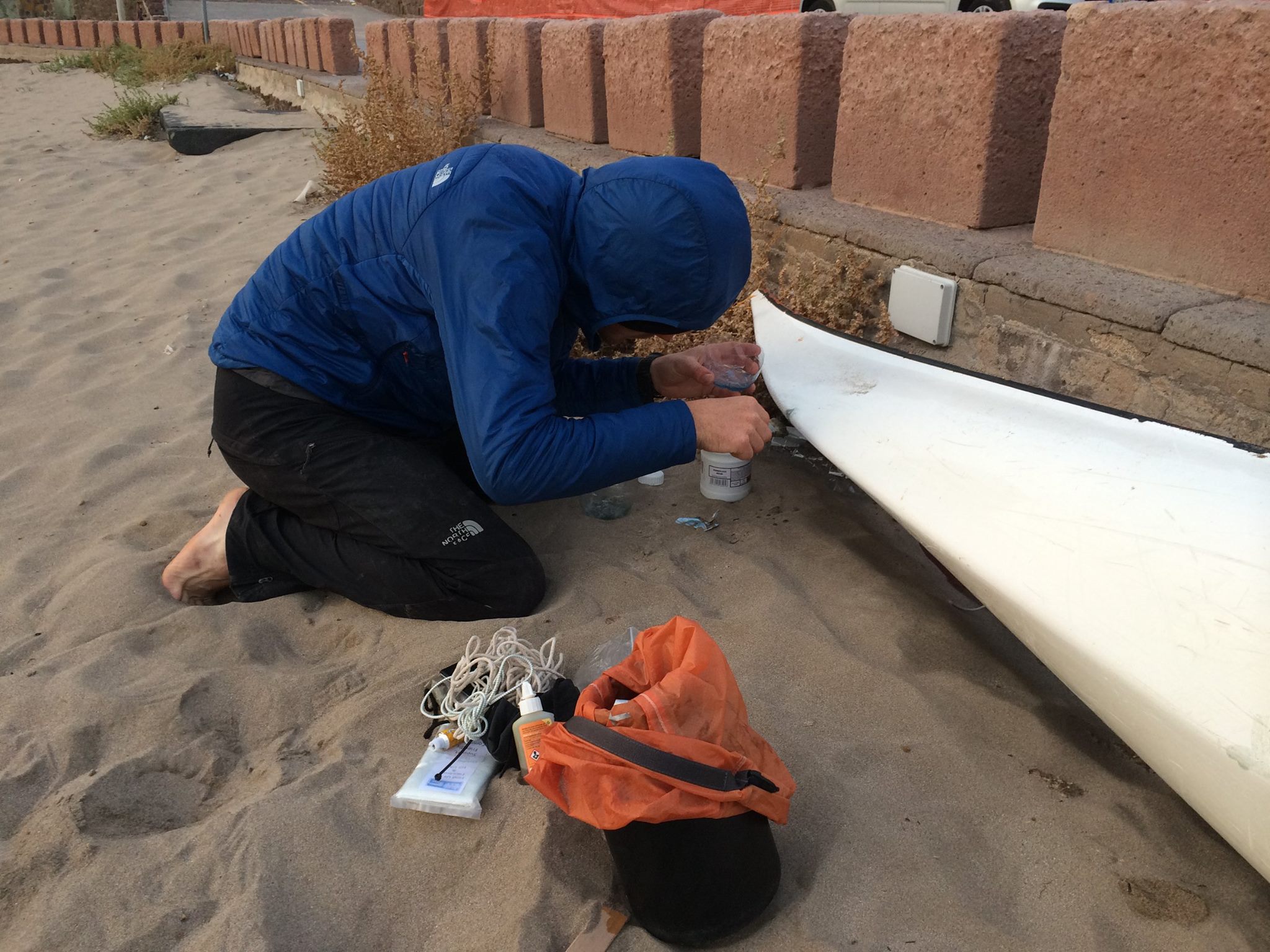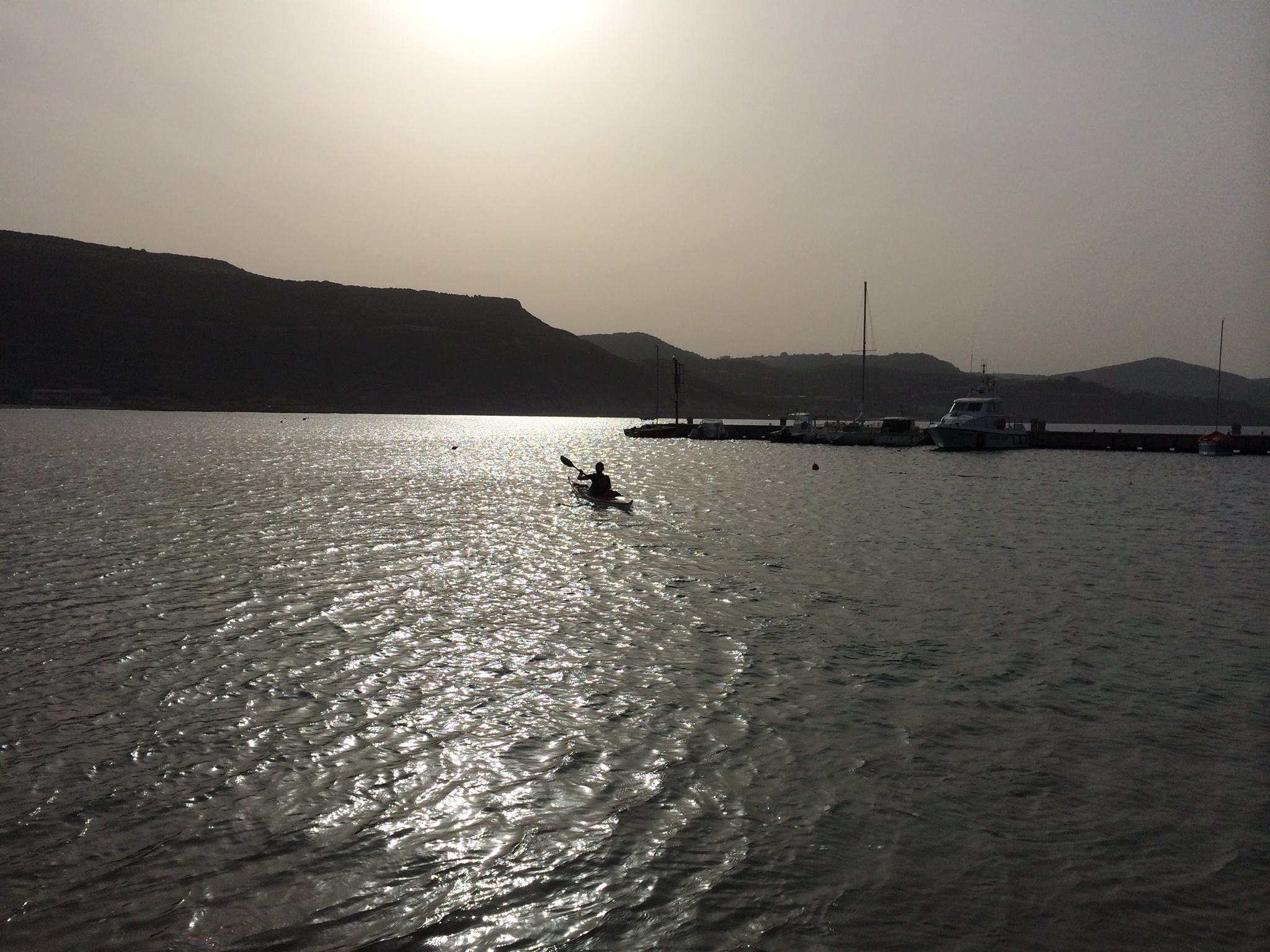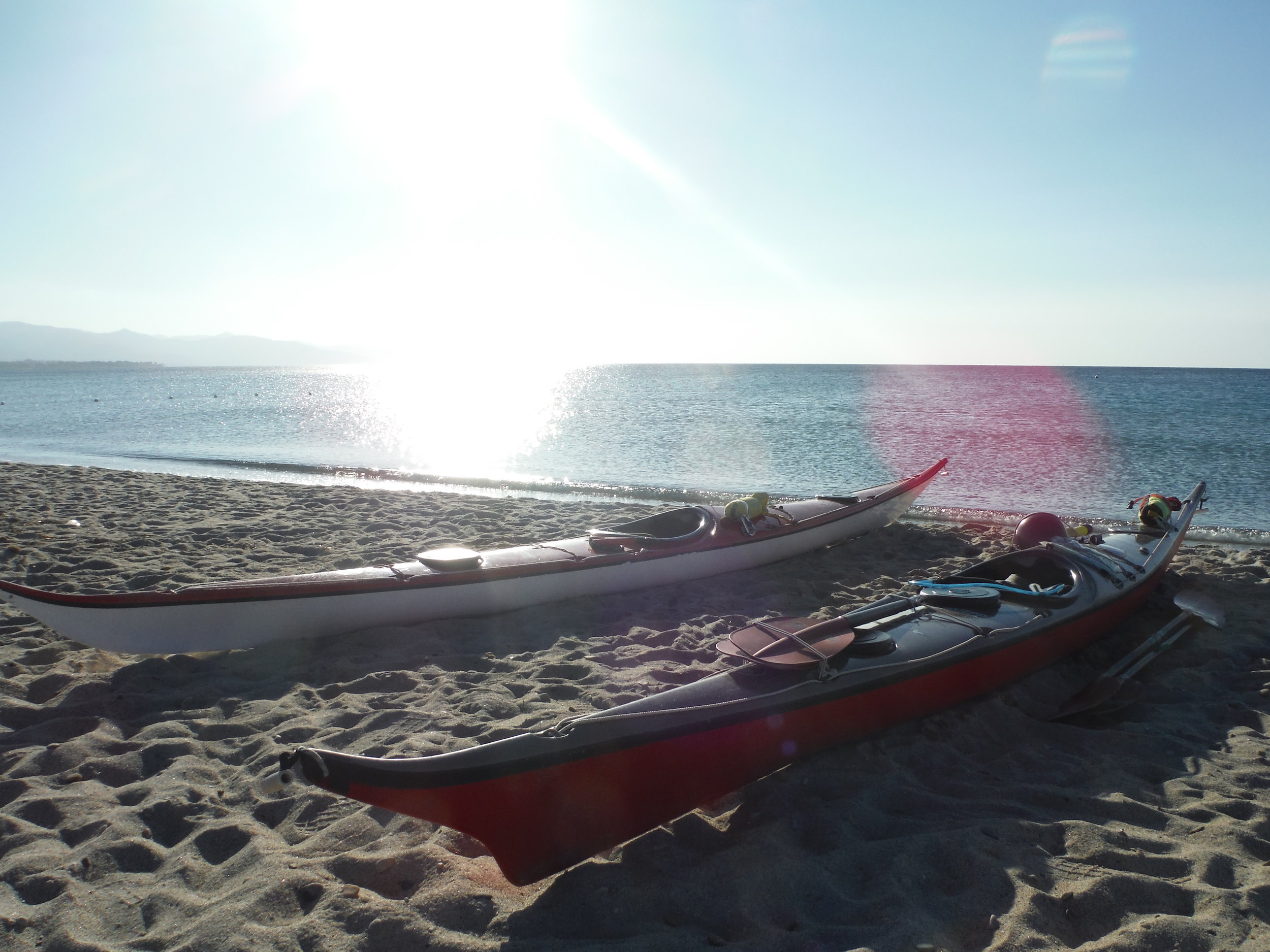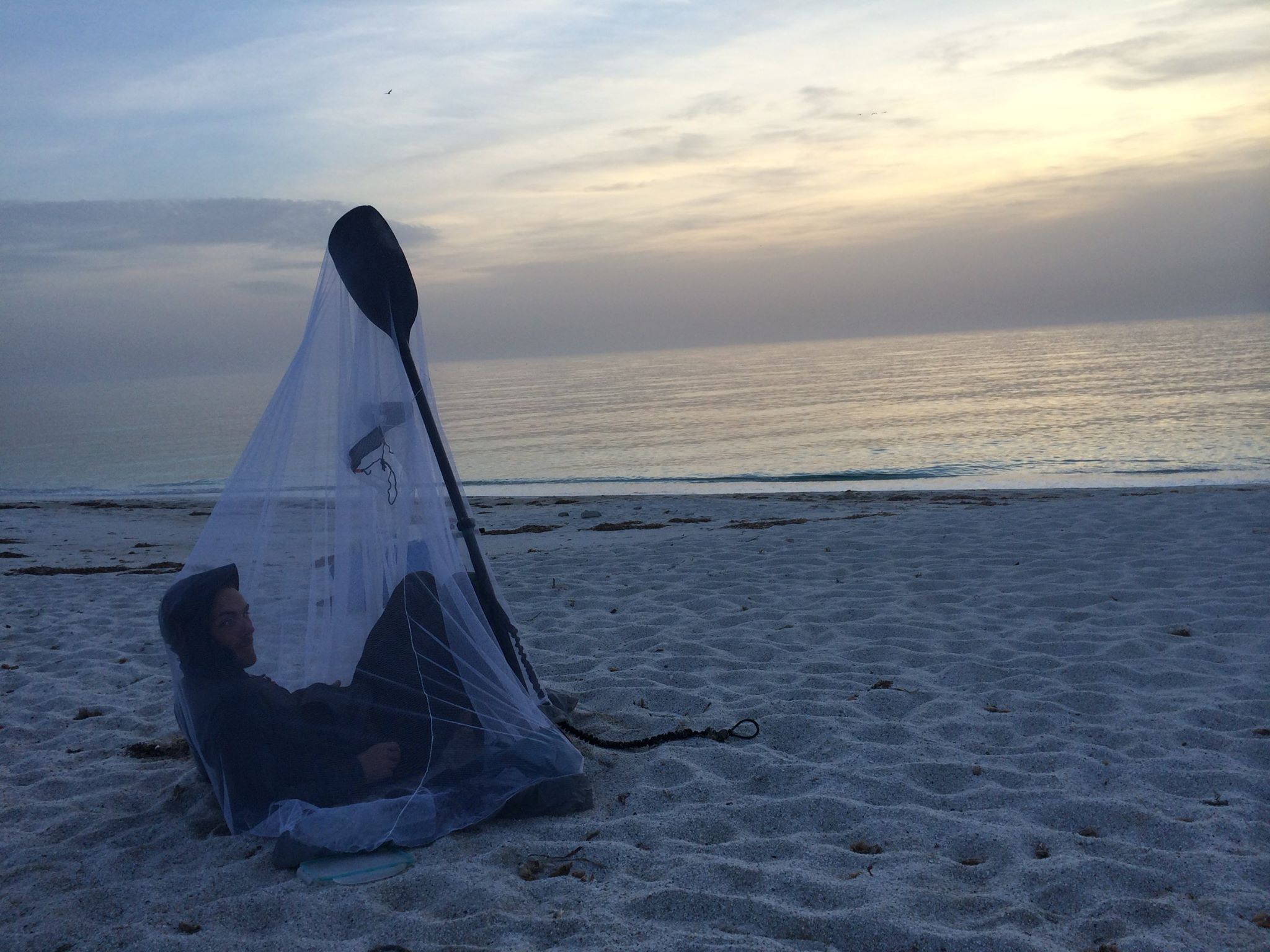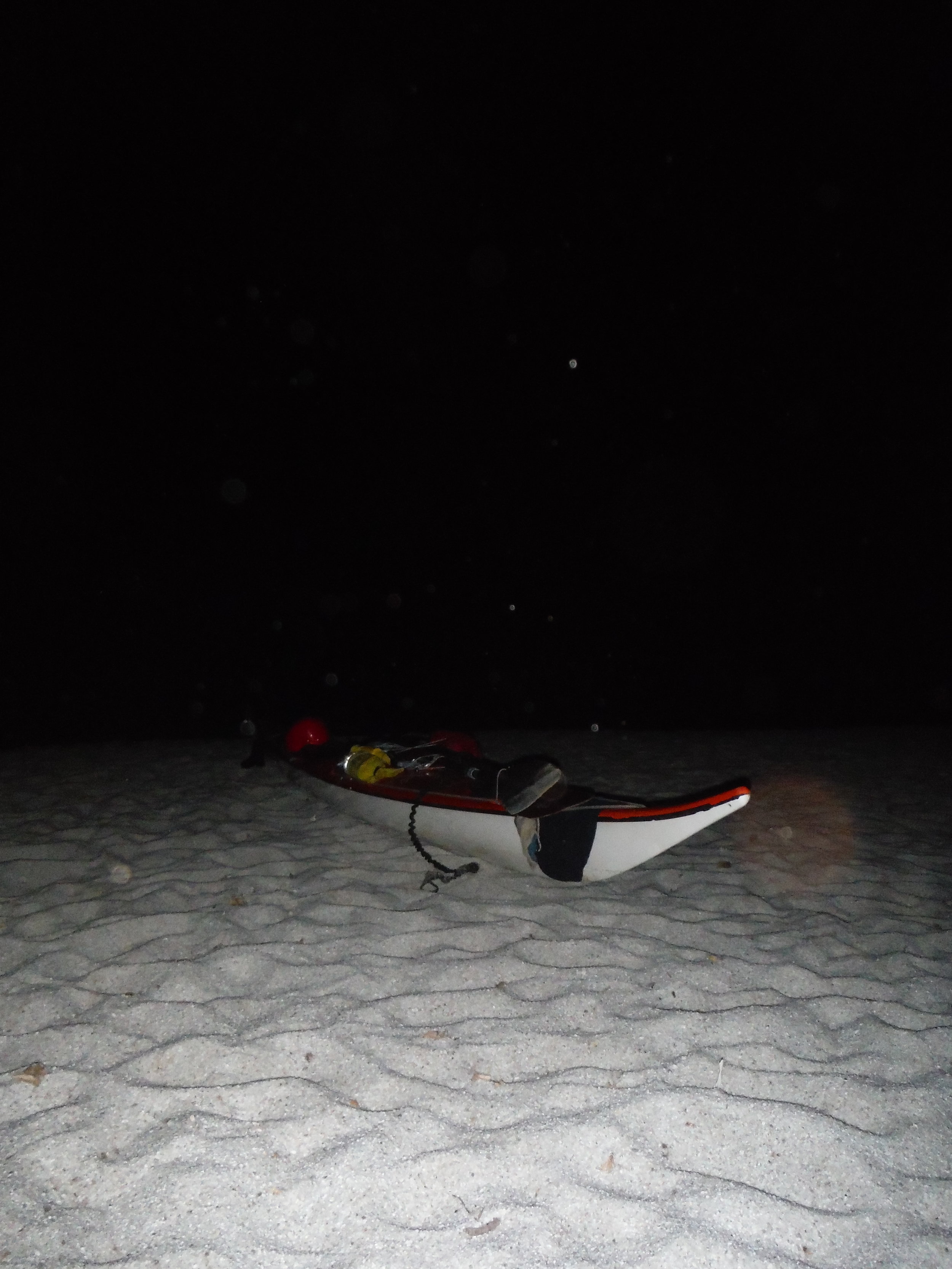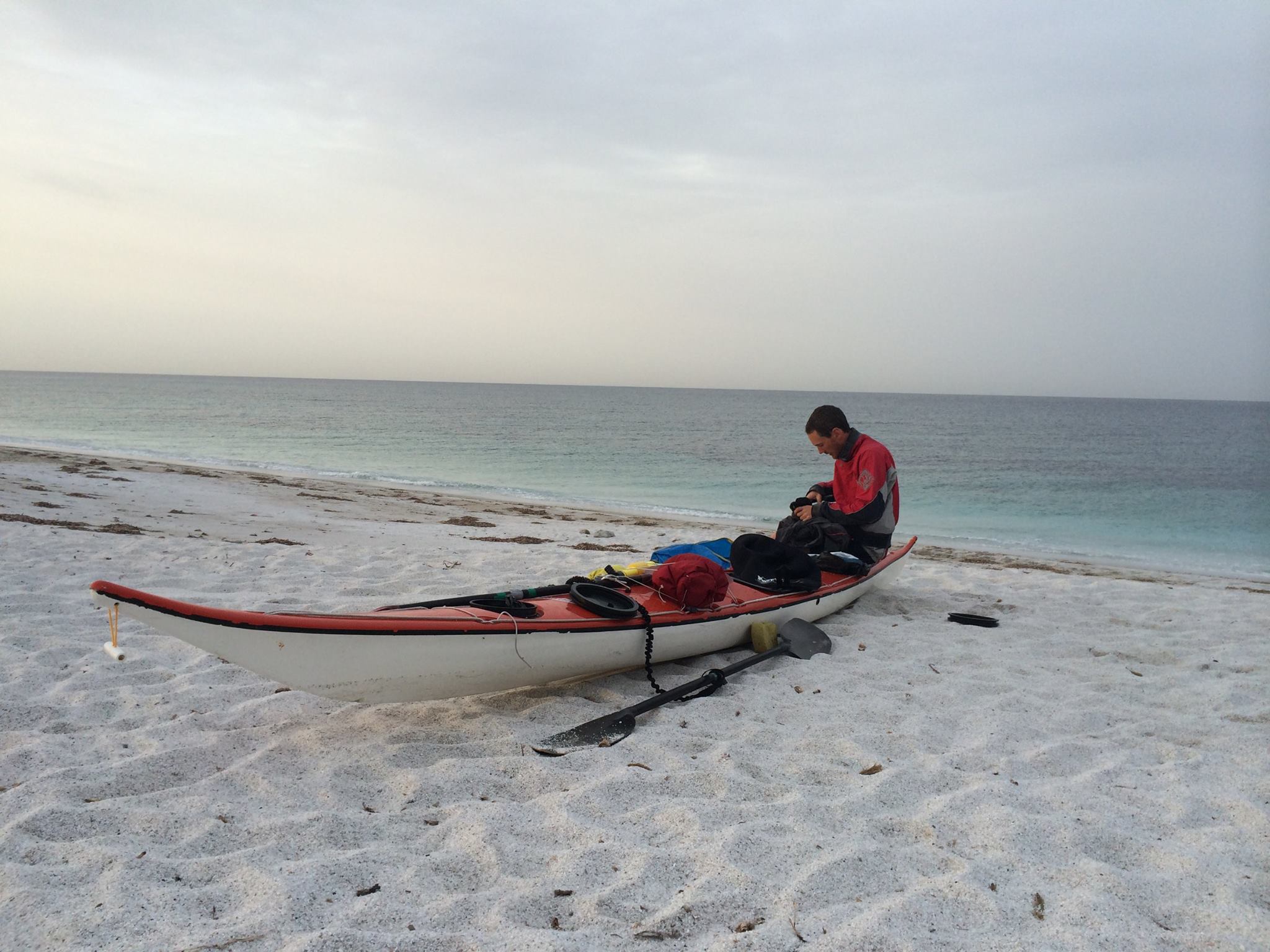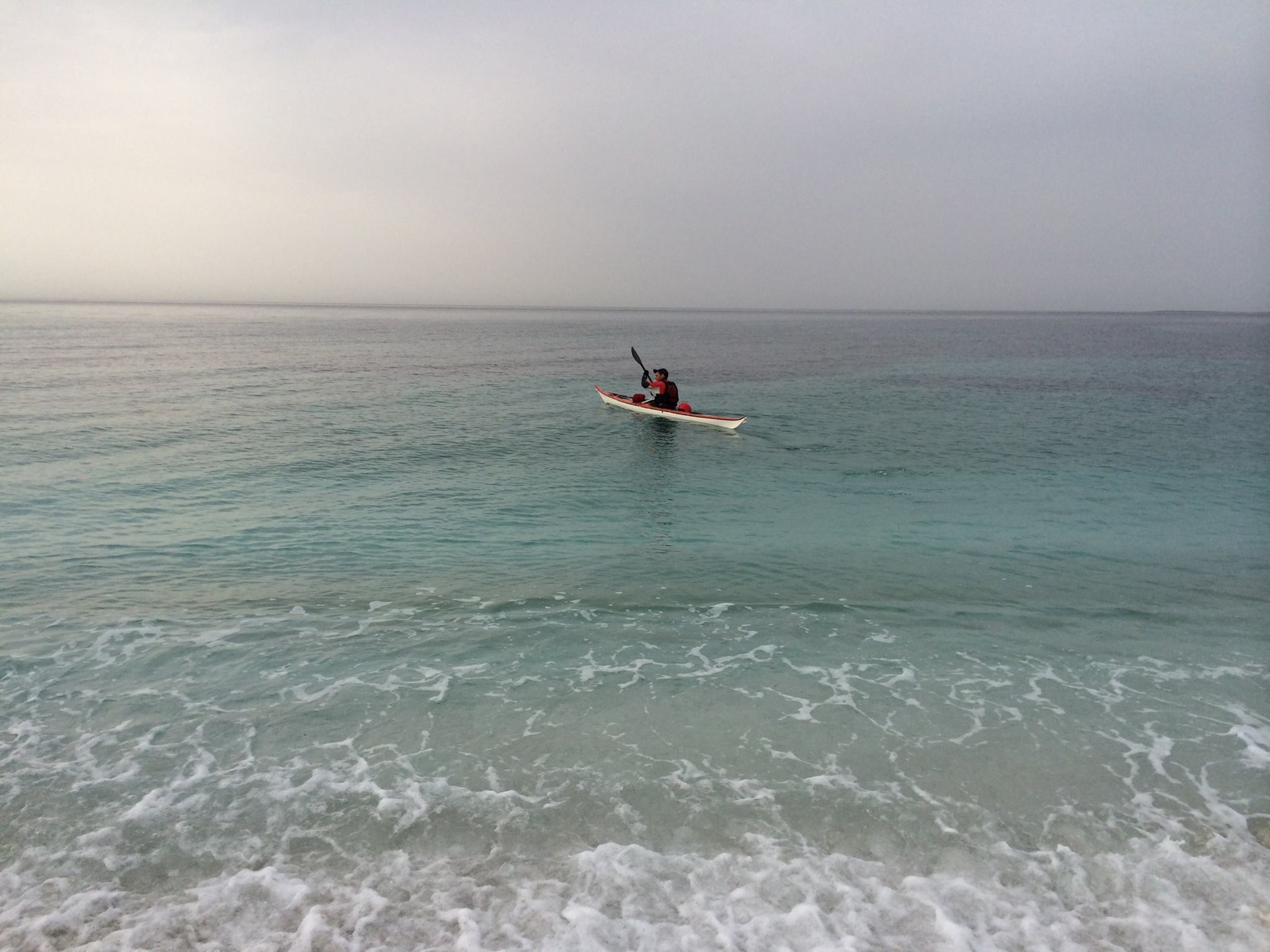Sardinia Circumnavigation - October 2016 - Trip Report
The best photos are courtesy of Ingrid Kvale
"But you've never sea kayaked before!" one friend said when I told him of my plans. "Surely you'll drown?" was another's encouraging words.
I'm an experienced white water kayaker but my sea experience is limited. I'm not a sailor and as a child I had a fear of swimming in open water (in fact big swimming pools were bad enough...). I also had very little time to properly plan this trip, with only 3 days at home after my Corsica GR20 trek.
Luckily I just about managed to buy a sea kayak before heading out to Corsica, and I'd even managed to get out on a flat section of the River Avon to try it out. When looking at sea kayaks I'd tried to weigh up the pros and cons of fibreglass versus composite boats - eventually I boiled this down to a sexiness versus practicality argument. I'm not well known for taking particularly good care of my kit and so the durability of a composite boat seemed like the sensible choice. However, sexiness won out, but the budget didn't! I ended up with a 20 to 30 year old Valley Nordkapp with a Greenland style cockpit and no foot plate or back rest. It turned out that the size of the cockpit and my lack of agility meant that most of the self-rescue techniques described in the 'Learn How to Sea Kayak' book I'd bought were out - I was going to have to rely on my roll!
The 3 days between Corsica and Sardinia passed in a bit of a blur, fixing up broken or missing parts of my boat and checking and packing kit. I was lucky that my girlfriend, Leanne, was now also able to join me for the first week or so in Sardinia - we got hold of another old Valley Nordkapp and again started the repair work on that.
Somehow we'd managed to talk the airline into flying the sea kayaks for us and us first problem came at the check-in deck when we had to convince the staff that we were all above board! Eventually, with the boats hand searched and loaded onto the plane, we were able to relax and wonder what Cagliari would bring.
Cagliari brought the rather unusual site of two 5.5m kayaks coming out along the normal baggage reclaim belt. It wasn't the baggage handlers' best piece of decision making, the boats caught on something in the system and stopped, blocking all the other bags.
Boats rescued we went to pick up our hire car to find that due to our delay it had already been released to someone else. With limited options available we ended up hiring and paying for another car - a small Fiat Panda being the only option...
Now fully underway we headed out to buy supplies. I'd taken an MSR Whisperlite stove out assuming that it would be easy to find liquid fuel in Sardinia. This was a bad assumption and so I ended up leaving Leanne on the beach (in the rain!) so that she could pack the boats whilst I went off to return the hire car and search for fuel.
With all these minor problems it was too late to start paddling by the time I got back to Leanne. She had done a great job though, managing to completely pack both the boats and keep all the kit and herself dry by rigging up the tarp we had.
Waking up early the following morning and we were confronted by force 4 winds and 1.5 m swell - testing conditions for me on day 1, let alone Leanne who has only previously spent about 5 days in a kayak! Leanne put in a great show on that first day and we made good time, managing to cover off a leg and a half (because we hadn't paddled on the first day we were trying to make up distance). On a remote and sheltered beach that night we were able to make a fire and cook jacket papers, one of the better meals of the trip!
Conditions improved for the next week and we were able to make good progress, eventually getting nearly a day ahead of schedule. We had several stunning days, paddling in t-shirts under clear blue skies. There was one long 10hr day crossing the Golf of Orosei (a cliffy section with few places to land) where we finished after dark. At the end of this day we'd been in the boats for 7 hours without a break and so even a pod of dolphins dancing in the setting sun did little to lift our spirits.
The forecast for Leanne's penultimate paddling day including 3m swell, breaking waves and force 6 winds. Tailwinds were predicted so we didn't want to waste the opportunity and so decided to get up and paddle early, expecting the weather conditions to peak around noon and hoping to be off the water by then. The weather picked up quickly just as we started a bay crossing and so I made the call for us to make an 'emergency' landing at a nearby marina, probably the last easy landing place for the next hour or two. Big breaking waves chased us into the marina and Leanne capsized after falling off the back of a 2m one, doing a fantastic job of staying in her boat and allowing me to right her - a swim there wouldn't have been good.
We lost the rest of that day and the next couple of days to bad weather, giving a dramatic end to Leanne's expedition. We hadn't really been using our tent on the expedition, preferring instead the simplicity of rigging a tarp from the kayaks. However, in the storms that first night we decided to erect the tent only to find the poles brittle from sea water and snapping like twigs. With a lot of care, and several repairs to the tent poles, we were just about able to get it upright and have a reasonable night's sleep.
With Leanne now gone I had 5 days of solo paddling ahead of me before meeting Ingrid in Porto Torres (another friend who was joining me for part of the expedition). The second day of this was the highlight of the trip for me - the day started paddling along the Costa Smeralda, with lots of islands, houses and expensive yachts to capture my attention. I was intending to finish near the picturesque town of Santa Teresa Gallura but upon rounding the headland there the setting sun across a glassy calm sea with no other boats in sight was too tempting to ignore. I ended up paddling until dusk, covering around 60km in 10 hours. I finished tired but immensely satisfied.
Kayaking solo was tough. The sense of isolation and vulnerability strong. Sometimes I didn't feel in control of my own destiny, a small mistake could leave me drifting alone in the sea. But you have to put your head down and focus. Twice I had to have a strong word with myself when the conditions became too much and I felt myself slipping towards the edges of panic. This is one of the reasons why I do these sports, pushing my limits and developing the physical and psychological resilience to succeed.
But paddling solo provided lots of time to think and reflect. I'd left a good career for a year of adventures. Why was I sacrificing stability and security for all this? But the simplicity of the expedition lifestyle is something I love. I have no worries apart from which beach I could sneak onto to camp for the night. I knew as soon as I was home there would be 'to do' lists and chores, but on expedition the days pass by in a stress-free rhythm. Eat, sleep, paddle, repeat.
For the next 12 days there were regular F3 and F4 headwinds. Ingrid's arrival provided some fresh motivation and much needed company but soon it was time for her to leave again. I was tired and fed-up of paddling. One night I was trying to choose where to land, there was a small sandy beach and a small shingle beach very close to each other. Normally I prefer shingle beaches but this night I opted to go for the sandy beach, on the basis that it was slightly bigger. When I woke in the morning large breaking waves were crashing against the shore, the shingle beach completely underwater.
The wind was building and I was tired - I really didn't want to go out today. But I didn't trust myself to stop, if I took a day off would I ever start again? And what if the weather kept getting worse - I couldn't stay where I was, the beach wasn't big enough if the sea levels rose much further. Wearily I got ready to launch. My first attempt ended in disaster, I was immediately pushed sideways onto some rocks by the waves, my boat cracking ominously against them. Hopping out, I dragged the boat away from them and inspected it for damage. I couldn't see anything so I tried launching again, slightly further up the beach this time. The success of this second launch was immediately dampened by a realisation that I'd left my map on the beach. Dejectedly I turned around and tried to line up the kayak for a landing along the thin non-rocky part of the beach. All seemed to be going well and in the last few seconds I ground across a submerged rock, a rending tearing noise cracking the boat. Two hours and a lot of fibreglass repair kit later (I'd also found a crack from my first launch attempt) and I was ready to go. I paddled along a sandy beach for 15-20km before deciding to cut the day short and land rather than attempting the next cliffy section. Regular big breaking waves guarded the landing; scared and exhausted I surfed the first few in before capsizing on the fourth. A couple of failed rolls later and I was in the sea, trying to keep hold of everything as the waves dragged me the final hundred metres or so to shore.
Fortunately the weather improved for the final few days. I'd also baked a couple of spare days into the schedule and with good weather forecast I was able to use these to shorten the distance. Dropping the paddling time down from 8hrs+ per day to around 5hrs felt good, I started early and chilled on the beach in the afternoons.
26 days after I started with Leanne I arrived back at Poetto Beach in Cagliari by myself. I'd lost 3 days due to logistics and bad weather, I'd covered around 800km (probably more as I doubt I paddled in straight lines!) over 23 paddling days and 150 hours. Now the only challenge that awaited was getting the kayak home on the plane...
